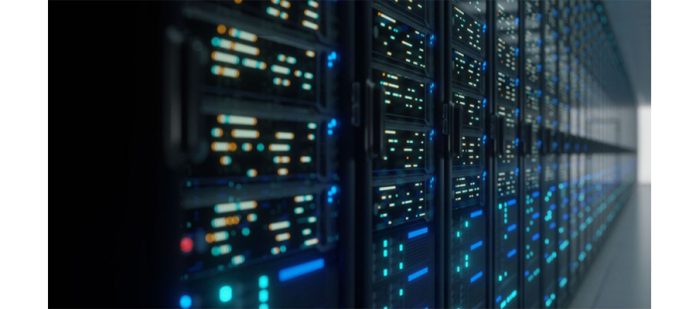Courtesy: Broadcom
As application modernization sweeps across the enterprise, executives and technology leaders are grappling with questions about how to manage legacy and modern applications side-by-side. Legacy applications are not going away anytime soon. Organizations need to manage and monitor these applications as effectively as their modern counterparts. In this post, we discuss the importance of monitoring legacy applications and some guidelines for implementing it.
Differences Between Legacy & Modern App Architecture
Before we talk about monitoring legacy applications, it helps to define the differences between legacy and modern applications. The table below highlights the key differences:
| Legacy | Modern |
| Hosted on a hardware or virtual server | Hosted on containers in the cloud |
| Monolithic architecture | Distributed microservices |
| Client to server | Service to service |
| Point-to-point communication | Many-to-many communication |
| Proprietary, in-house tooling | Open source tools |
| Written in a single programming language | Polyglot |
| Quarterly releases | Continuous delivery, multiple times per day |
| Large monolithic databases | Distributed, varied storage |
| SQL for data analysis | NoSQL and streaming real-time analytics engines |
| Accessed from desktops & laptops | Accessed also from mobile & IoT devices |
| Accessed behind a firewall | Accessed via the public internet |
| The firewall is the primary form of defense | Security involves multi-factor authentication (MFA), identity and access management (IAM), data encryption, and secrets management |
| Integrates via proprietary plugins | Integrates via API |
| Managed using manual human effort | Managed using automation enabled by vendor tooling |
| Reactive monitoring by humans | Proactive monitoring using AIOps |
As you can tell from the table above (which is not exhaustive), legacy and modern applications have much that separate them. However, what unites them is that businesses have the same goals for these applications.
The push for modernization is driven by the need to enable greater scale of usage, mobile access, better performance, more reliability, and cost savings. The need for change is being driven by executives who see the need to stay competitive in an ever-changing technology landscape.
Why Monitor Legacy Applications?
Despite it being natural to modernize applications, the majority of enterprise applications today are still legacy. These legacy applications account for 50-80% of the total IT budget. Enterprises are migrating to save on these exorbitant IT costs and even to survive in a fully remote workplace. In this atmosphere, it is important to not just drive modernization, but to simultaneously monitor legacy applications that are in the process of being migrated.
The Easy Part of Monitoring Legacy Applications
In some ways, it’s actually easier to monitor legacy applications. They have fewer moving parts, they don’t change as quickly, there is much less data to keep track of, and it’s easier to identify the root cause of an issue. IT teams have been monitoring these applications for decades, and they know every possible issue like the back of their hand. IT also enjoys full control over the creation and maintenance of these applications.
All of these benefits would be great if you didn’t need to modernize and keep up with the tectonic shift in technology that we’re experiencing.
The Hard Part of Monitoring Legacy Applications
The biggest challenge of monitoring legacy applications is the manual processes that are heavily dependent on people. Modern monitoring tools go far beyond the application stack to monitor events and data coming from external third-party networks and applications. This type of monitoring needs to be automated and done with the help of machine learning. It cannot be done using traditional manual monitoring methods that simply check basic metrics like server uptime, network requests, and latency.
Security monitoring is another big challenge when working with legacy applications. These applications are not built for automated or over-the-air updates. Their security configurations are static, and if simply lifted-and-shifted to the cloud, they can leave gaping vulnerabilities exposed.
Finally, monitoring can become complex when an application is half-legacy and half-modern. This is the case with applications that are still in the process of being migrated from monolith to microservices. The varied mix of resource types and communication patterns can be hard to keep track of.
AIOps Bridges the Gap between Legacy & Modern Applications
AIOps, or Artificial Intelligence for IT Operations, unifies the management of legacy and modern applications. For example, it gives you:
A single pane of glass view: AIOps provides an end-to-end view of all applications, whether legacy or modern. Unlike modern monitoring tools that are built specifically to monitor modern applications, a robust AIOps solution like Broadcom’s is able to span both legacy and modern applications.
Automation for legacy: AIOps emphasizes automated processes over manual ones. AIOps enables automation not just for modern applications, but importantly, for legacy applications as well.
Predictive security for legacy: With the high likelihood of security issues cropping up with legacy applications, they are badly in need of predictive security monitoring. That’s just what AIOps brings to the table. AIOps is able to detect patterns, anomalies, and spot vulnerabilities in legacy applications before they escalate and affect end users.
In conclusion, application modernization is attractive because of its benefits, but the journey to modernization has challenges along the way. To get the most out of their move to a modern application architecture, organizations need to unify the way they manage and monitor their legacy and modern applications. AIOps is the answer to this. AIOps gives organizations a way to monitor both legacy and modern applications from one platform. It enables them to automate tedious monitoring tasks and go further to offer predictive security. In this way, AIOps revolutionizes how organizations manage their legacy applications, and more importantly, brings legacy applications up to par with their modern counterparts.








